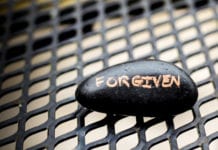What is a simple, repeatable, transferable and meaningful way to communicate the most important concepts for spiritual formation as a Christ follower? We have been using the term, “the way of Christ,” for spiritual formation at Gateway Church for a number of years. Jesus invites people to not only ‘believe’ in Him but to follow in His ways. The early disciples were called followers of the Way (Acts 9:2).
Way of Christ
We define four aspects of the “way of Christ” to bring a simplicity to people’s experience of what a life of following Jesus looks like. The four aspects of the way of Christ are; Love God (GOD), Build Character (ME), Love People (YOU), and Be the Body (WE).
Jesus, himself, tried to simplify the Law in his teaching by boiling it down to two points – Love God and Love your Neighbor. I don’t think Jesus meant to minimize his full teachings through his summary statement (Matt 22:36-39) but rather as a statement of clarity, simplicity and transferability of the big idea.
Power of an Image – Icon
I am learning about the power of icons and symbols as the means of portability of an idea or language. Icons provide a representative symbol for something. It provides easier memory recall. I am trying to add an icon to the spiritual formation language that is already present in our church culture, “the way of Christ.” I want the language to be more memorable, repeatable, and transferable.
I am hoping the icon of an X allows these four aspects of the “way of Christ” to be quickly recalled for an individual, a Small Group or a Network about what God is up to and discern where they are going next.
An X gives a framework for the “way of Christ” that allows us to centrally remember that the work of the church is first and foremost about Jesus at the center and that only through Him do these four aspects connect with each other.
GOD – Love God
The greatest commandment given to us by Jesus himself. Loving God is about recognizing the priorities in our life that have squeezed God out of the center in the way we live. Living out the greatest commandment is the process of putting God as our first love and priority in life. Jesus says the greatest commandment quite simply is to:
“’Teacher, which is the greatest commandment in the Law?’ Jesus replied: ‘Love the Lord your God with all your heart and with all your soul and with all your mind. This is the first and greatest commandment.’” Matthew 22:36-38
ME – Build Character
Without a doubt, most of us look at ourselves and desire varying degrees of change. We see anxiety where we want peace. We see fear where we want courage. We see addiction where we want self-control. Transformation happens not by applying the latest self-help fad but by understanding and implementing the full richness of inner life change at a heart level. Jesus produces this change in each of us by his power and influence on our heart and ultimately resulting in changed behaviors.
“But the fruit of the Spirit is love, joy, peace, patience, kindness, goodness, faithfulness, gentleness and self-control.” Galatians 5:22-23
YOU – Love People
Truth be told, relationships bring about the best and worst of life. Our greatest joys consistently involve people. Our greatest pains consistently involve people. How does love for God impact and influence our love for people? Christ gave two great commandments. First, we are to love God with all our heart, soul, mind and strength. And second, we are to love our neighbors as ourselves. Life is rich when we increasingly practice truly loving people—not put up with people, not walk over people, not use people or avoid people—but truly love people.
“’Teacher, which is the greatest commandment in the Law?’ Jesus replied …. And the second is: ‘Love your neighbor as yourself.’” Matthew 22:36-39
WE – Be the Body
The world is a beautiful place, but it is also a broken place. How can we, with our limited time and resources, really make a difference together in a world overflowing with needs? As a community of Christ followers we are liberated by a love for God, set free from enslavement to living for instant gratification or the accumulation of things, and can passionately pour love and grace into the world around us. Astounding things happen when followers of Christ discover their spiritual gifts and mobilize into action by partnering with the body of Christ around them.
“For just as each of us has one body with many members, and these members do not all have the same function, so in Christ we, though many, form one body, and each member belongs to all the others. We have different gifts, according to the grace given to each of us.” Romans 12:4-6
Way of Christ – Holistic Spiritual Formation
We know the current realities of church language. We are about community. Or we are about mission. Or we are about the gospel. Or we are about the Bible. This is all useful language, especially when creating higher value priorities for a church to give intentional focus for its people.
The reality is we must holistically go and make disciples. I like the “way of Christ” language because it has holistic aspects that are critical for spiritual formation in individuals, Small Groups and medium sized Networks.
Multiplying X
An X is one image, the simple crossing of your fingers, that can give a clear grid of thinking about:
- GOD | Who is God (his attributes and my relationship with Him through Jesus)
- ME | Who am I (as an identity and growing character)
- YOU | What am I/We Doing on in Life and Mission Together (to love our neighbors)
- WE | Who are We (as a community with gifts in the body)
An X is a symbol for multiplication. I want these core aspects to be simple, repeatable and transferable so that multiplying generations of disciples can be intentional about growth in the “way of Christ.”
What are the most common icons and language in your church or ministry setting that are sticky? Are you seeing them get passed down to multiplying generations simply and easily? Why or why not?










